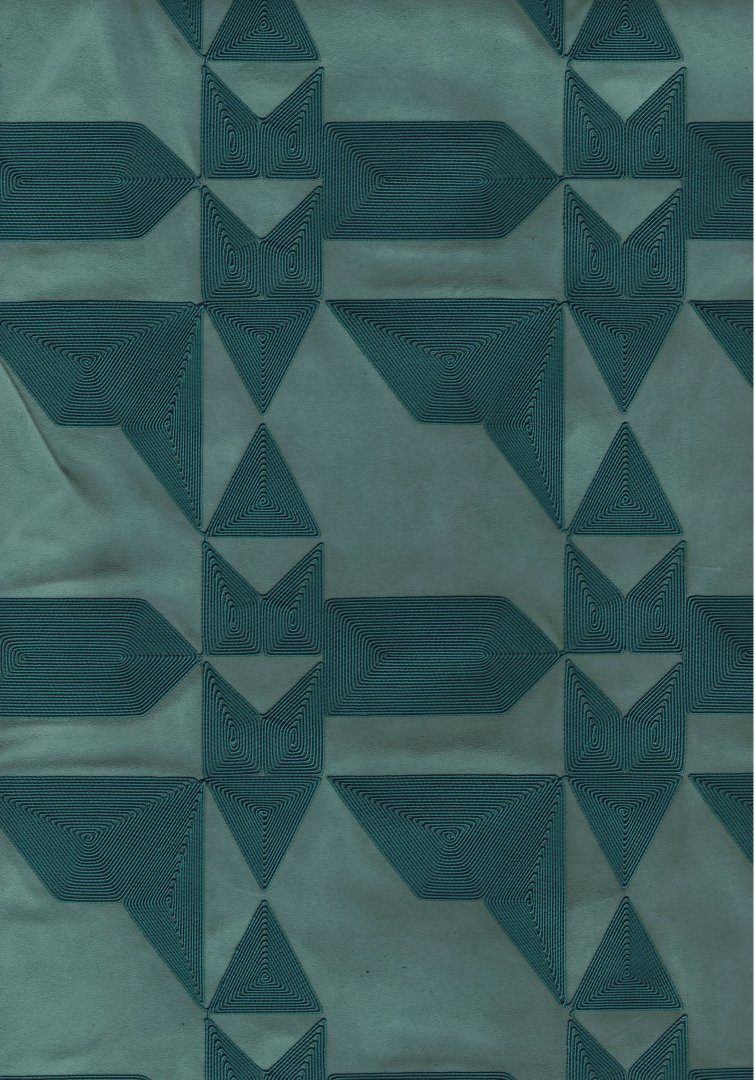Introduction to coiling in embroidery: an ancient and modern art
The coiling technique has applications in both fashion and interior decoration, demonstrating its versatility and timeless appeal.
Ideal materials for coiling: viscose and lurex
When making coiling, it is essential to choose materials that not only ensure the strength and durability of the cord, but also provide a fine aesthetic appearance. Viscose, with its luster and softness, is often preferred for its ability to reflect light and add a touch of elegance to the finished work. Alternatively, lurex, known for its shimmering effect, is ideal for creating eye-catching details, making each worked piece unique and precious. Choosing high-quality materials is crucial to enhancing the appearance of the finished product and ensuring that the coiling work stands out in any setting.

Basic coiling techniques: how to braid yarns
Learning how to braid yarns for coiling requires patience and precision, but with the right guidance, even beginners can achieve excellent results. The process begins by selecting the appropriate yarns and preparing the loom on which they will be woven. The basic technique of coiling involves the use of an embroidery hoop or special tool to help maintain the tension of the threads as they are woven together. As the threads are worked, the tension and pattern can be adjusted to create different textures and designs. This process is not only therapeutic but also allows each creation to be completely customized, fulfilling the need for exclusivity in textile design.
DIY projects with coiling: ideas and inspiration
Coiling offers a plethora of possibilities for DIY projects. This accessible and versatile technique lends itself perfectly to making fashion accessories, home decorations and personalized gifts. To start, you can explore using different materials such as viscose for its shine or lurex for a more sparkling effect. Making jewelry, such as bracelets and necklaces, or decorative accessories, such as pillows or curtains, allows you to express creativity and personal style. With coiling, even inexperienced hobbyists can create aesthetically and functionally impressive pieces that are ideal for adding a unique touch to rooms or outfits.
Advanced coiling: creating complex designs with lanyard
For those already familiar with coiling, exploring more advanced techniques can open up a world of creative possibilities. Creating complex designs with cording allows you to develop intricate work with minute details, perfect for high fashion or sophisticated interior design projects. By integrating different colors and materials, such as the inclusion of beads or the use of metallic threads, your designs can gain a new dimension of texture and shine. The skill of manipulating threads to form complex patterns not only enriches the final product but also elevates the level of craftsmanship and artistic expression in coiling.
Maintenance and care of products made with coiling
Once you have completed your coiling projects, it is important to know how to maintain and care for these items to preserve their beauty and durability. For pieces made from materials such as viscose or lurex, it is advisable to avoid harsh washes that could damage the threads or alter their luster. Prefer gentle cleaning, preferably by hand and with neutral detergents. Also, it is important to store coiling items in dry places and out of direct sunlight to prevent wear and fading of colors. By following these simple but effective maintenance tips, your coiling creations will continue to shine and be appreciated for years to come.
Conclusion
Coiling in embroidery, with its ability to transform simple threads into textile works of art, demonstrates how craftsmanship can be as fascinating as it is functional.
By delving into techniques from the basic to the more advanced, each maker can infuse a piece of himself or herself into each work, personalizing details in ways that go beyond the purely aesthetic. Thus, through care and dedication in material selection and making, each finished piece is not just an object of decoration, but a fragment of personal and collective history.
By carefully maintaining these works, they can become legacies of beauty and inspiration, testaments to a skill that defies time and fashion, and will continue to shine as examples of human creativity and its relentless pursuit of beauty through thread and needle.